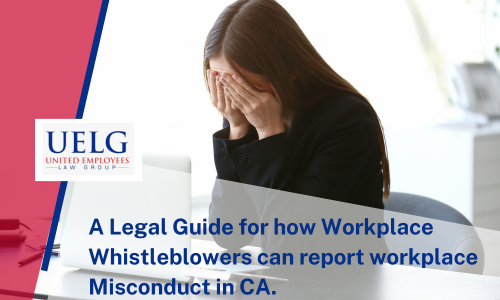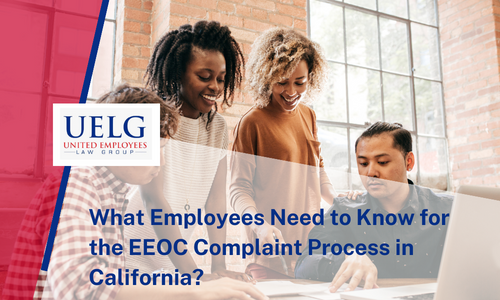Hire our employment lawyer to seek compensation. The moment you encounter workplace discrimination, the most awful feeling you may have is inequality.
Established on July 2, 1965, as part of the Civil Rights Act of 1964, The Equal Employment Opportunity Commission (EEOC) enforces federal laws addressing workplace discrimination, seeking to promote equal opportunities and fair treatment. However, filing an EEOC complaint can be stressful, so the lawyers at UELG assume you would like to know some hassle-free filing tips.
EEOC complaint process: Here’s what you need to know.
Starting a legal fight has no guarantees, but if you submit an EEOC claims complaint (called a “charge”) in the right way, you can greatly improve the probability of winning a case against a firm that discriminates.
Helping to ensure EEOC employee rights and resolving workplace harassment are critical functions of the EEOC claim process. The process is generally started by employees who are the targets of discrimination due to protected traits (such as race, sex, color, national origin, religion, disability, age, and retaliation for prior EEOC activity). In the beginning, you should seek guidance from qualified EEOC lawyers or federal employee EEOC attorneys who handle EEOC challenges.
Filing a complaint with EEOC is a six-step procedure:
- Timely Action: Make sure your complaint gets filed with EEOC within 180 days of the suspected discriminatory act.
- Contact EEOC: Contact the Equal Employment Opportunity Commission (EEOC) in real time over the phone, online, or in person by visiting the EEOC office.
- Provide Detailed Information: Submit a written complaint including your personal information, and incident details involving date, day, time, and place, along with a detailed description of what exactly has happened or is happening. Make sure to mention details about the offenders/employer with your complaint.
- EEOC Informal Investigation and Possible Settlement / Mediation: The claims will be informally investigated by the EEOC through the information you provide. During this time period the EEOC may also attempt to mediate or settle the matter.
- Formal Investigation: If the matter is not settled early, the EEOC will initiate an official inquiry, and begin a more robust investigation. The EEOC may participate in conciliation to settle the dispute if they discover proof of discrimination. Should conciliation be unsuccessful, the EEOC may file a lawsuit.
- Notice of Right to Sue: If a violation is discovered during the inquiry, but the EEOC decides not to file a lawsuit, you will be issued a Notice of Right to Sue, after which you may file a lawsuit.
Explore more about the process and benefits of EEOC complaint filing by consulting UELG’s EEOC lawyers.
When submitting a complaint, speaking with EEOC attorneys has various advantages. Attorneys at UELG concentrate on EEOC matters, help people navigate the complex procedure, and help to ensure their submissions are complete and accurate. The chances of a favorable resolution are increased because EEOC attorneys provide insights into the complex facets of discrimination accusations. Approaching EEOC attorneys offers a tactical benefit since they contribute a plethora of knowledge and understanding which ultimately optimizes the efficiency of the complaint submission procedure and raises the likelihood of a successful resolution.
Conclusion
It is a positive calculated move for people seeking justice when faced with workplace discrimination to retain the services of EEOC attorneys for guidance when submitting a complaint. UELG’s experience simplifies the complex procedure involved in submitting a complete and accurate charge of discrimination. The benefits extend beyond procedural instruction and encompass likely greater success rates as well as deeper insights. People facing workplace discrimination who work with EEOC attorneys have a significant edge in the handling of the intricacies of discrimination lawsuits, which helps to better defend their employment rights. Contact us at (888) 545-0013 for get more info about EEOC Complaint Process.












